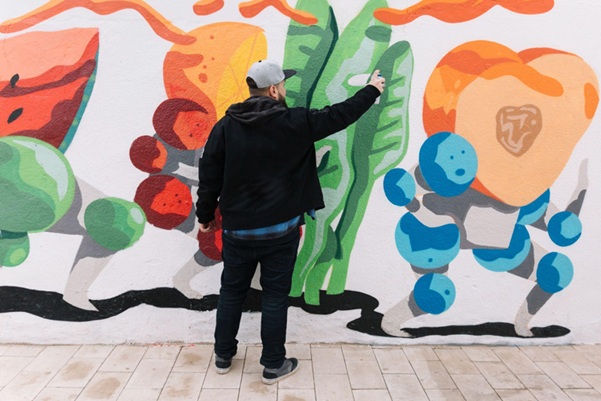Wall Murals vs Traditional Paint: Which Adds More Impact to Interiors?

Designers keep redefining how walls influence mood, branding, and perception. Two leading approaches—traditional paint and mural painting—serve different goals. One focuses on color and simplicity. The other captures detail and depth. As design expectations evolve, so does the demand for personalized, high-impact spaces. Choosing between paint and mural depends on purpose, timeline, and visual ambition.
Visual Impact and Design Possibilities
Traditional paint creates clean finishes and uniform tones. It supports subtle elegance through minimalism. Walls appear polished, especially with neutral palettes or bold single-color themes. This route suits clients seeking timeless backdrops or subtle brand integration.
Wall mural painting goes further. It allows custom illustration, branded graphics, and full-scene storytelling. It delivers depth and dimensionality that paint alone cannot provide. From abstract expressions to photorealistic visuals, mural painting becomes a statement piece. It transforms plain walls into focal points, helping interiors feel intentional and immersive. Clients enhancing retail shops, gyms, cafes, or commercial spaces tend to favor this.
For branding, murals reinforce identity. Logo integration, thematic visuals, or cityscapes give commercial interiors a recognisable edge. Paint, while neat and cohesive, doesn’t engage the same way unless paired with vinyl sticker printing or murals.
Durability and Maintenance
Paint requires periodic refreshing. Scratches, stains, or scuffs appear faster on flat paint. Gloss and semi-gloss finishes resist some damage, but long-term wear remains an issue in high-traffic zones.
Mural painting, when sealed correctly, lasts longer. Applying protective coatings preserves vibrancy, repels moisture, and guards against fading. Murals don’t peel or crack like some paint jobs. Interior murals designed for humidity-controlled environments, like offices or cafes, perform well over time.
Incorporating vinyl sticker printing elevates mural application. Printed murals offer sharp visuals with high-definition clarity. These pre-designed vinyl sheets adhere smoothly to walls and outperform basic painted designs in resilience. Maintenance becomes easier, cleaning requires no special treatment.
Customization and Technical Flexibility
Paint limits design to manual technique, stencils, or gradients. Even skilled painters encounter limits in detail, texture, and consistency. Color mixing also risks inconsistency between batches.
Mural painting provides more technical freedom. Whether hand-painted or digitally printed, artists replicate complex designs without visual compromise. Digital methods support scalability across large surfaces, maintaining consistency.
Vinyl sticker printing makes detailed murals possible even without an artist on site. Graphics teams prepare visuals, test compositions digitally, and then produce adhesive murals. Installing these offers precision. Edges align. Color stays true. Businesses prioritizing branding precision, such as retail franchises or clinics, lean toward this process.
Application Time and Disruption
Paint dries in layers. Full coverage across multiple rooms may extend timelines. Touch-ups also add to project length. For busy businesses or residential units, this causes downtime.
Mural painting through digital printing reduces downtime significantly. Vinyl-printed murals apply in hours. There’s no waiting for each coat to dry. No strong fumes. This fast turnaround benefits commercial spaces needing minimal disruption.
Although hand-painted murals require more time than printed ones, the result delivers unique craftsmanship. Some clients prefer that artistic process for spaces like lobbies, galleries, or lounges. Still, vinyl sticker printing remains faster and more efficient for large-scale rollouts or standardized installations.
Cost Considerations
Paint appears budget-friendly at first. However, recurring maintenance and touch-ups add cost. Large spaces also require more gallons, labor, and masking supplies.
Mural painting seems costly initially, but it offers stronger long-term value. One-time installation, minimal maintenance, and visual impact offset upfront costs. Clients choosing vinyl sticker printing access economies of scale. Once printed, murals can be applied repeatedly in different branches or franchises without redesign fees.
Paint’s main advantage lies in volume coverage with minimal material. Murals, on the other hand, focus on value per square foot. Spaces requiring uniqueness, brand recall, or theme consistency benefit more from mural integration.
Conclusion
Interior impact depends on clarity of vision. Traditional paint supports subtlety and clean finishes, ideal for homes or quiet professional spaces. Mural painting amplifies energy, identity, and emotion, delivering striking visuals through artistic detail or vinyl sticker printing. Businesses aiming for stronger engagement and brand alignment gain more from murals than paint.
Looking for bold visuals without delay? Contact Pure Color Digital Printing for vinyl sticker printing in Manila and bring your walls to life.







